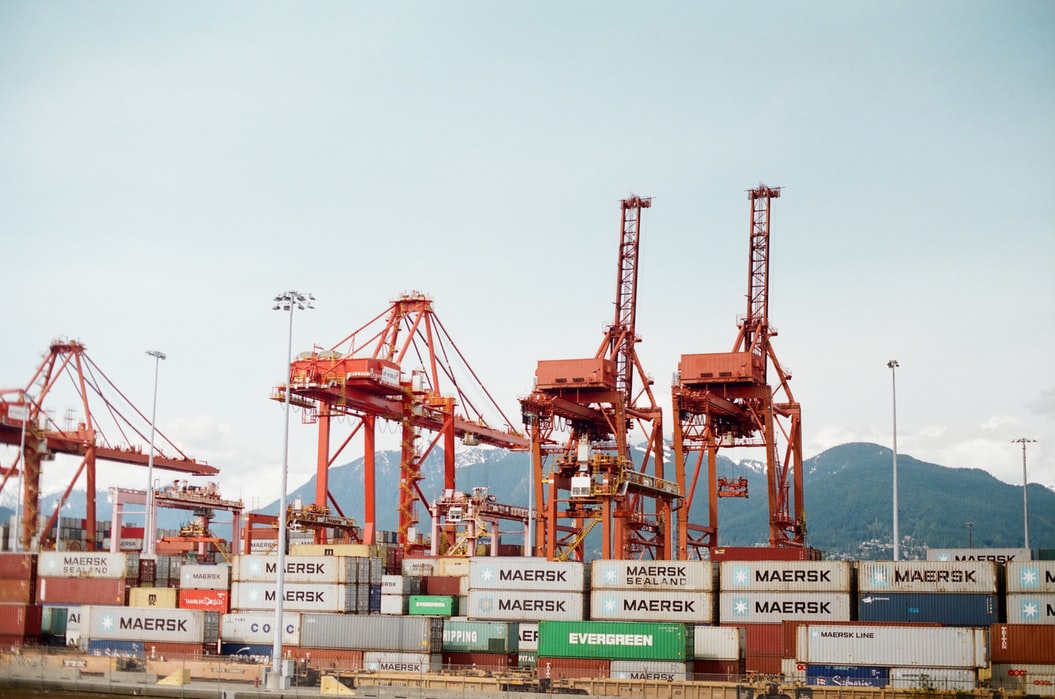
Written by Oscar Brunzell
Abstract
In this paper, it is argued that the European Union transformed its one-dimensional trade policy into a two-dimensional trade policy, specifically, to protect the environment from unnecessary harm. Historically, the European Union has maintained one of the most open economies in the world, relentlessly promoting free trade. Consequently, the average applied tariff for goods imported into the EU is minimal. Indeed, more than 70 percent of EU imports enter at zero or reduced tariffs. As a result, countries with low production costs, like China (located clear across the globe from Europe) account for more than 20 percent of the product imported into EU member states. The combination of the EU’s historically open market and low transportation costs makes the EU an attractive market for countries around the world to sell their goods. Although free trade is a noble intention in and of itself, and all but guarantees growth and prosperity, it does not justify the consequences of humanity’s mismanagement of our environment, and should not be considered an excuse to disregard opportunities to reduce harmful fossil fuel emissions where possible. With COP24 just around the corner, the critical window of opportunity for the success of the Paris Agreement narrows, which means the time to address what UN Secretary-General António Guterres calls “the defining threat of our time” is now. Therefore, despite the advantages of free trade, free trade at the cost of the environment is not an option. Free trade – YES, but not at the cost of the environment. Therefore, in this paper, it is suggested that the European Union should rephrase its current trade policy and transfer it into a trade policy where the environmental dimension is included. Here, tariffs will be included depending on the methods of transportation, the distance and good’s scope (TDS factor), i.e. how transportation affects our environment.
Introduction
One of the most important aspects of the European Union is free trade. Free trade between the union’s member states was the starting point for the Union, and free trade was integrated into the European Union’s DNA. The purpose of the free trade policy has not only been to eliminate trade barriers between member states but also, to encourage non-EU countries to trade with the EU.
Providing non-EU countries with access to the European market gives non-EU countries access to the largest economy in the world, i.e., access to a market generating €12.6 trillion in sales, consisting of 500 million consumers (with a per capita GDP of €25 000). Only the United States boasts a comparably large market–€11.5 trillion, with the Chinese market a distant third at €4.6 trillion, and Japan fourth at €4.2 trillion (European Commission, 2019). In 2016, EU exports represented 15.6% of global exports and EU imports 14.8% of global imports. Being both the largest market in the world, as well as the most open market in the world, results in a global competition to export goods to the European market. That competition is currently led by China, which accounts for 20.2% of all EU imports, followed by the US (13.8%), then, Russia (7.8%). Notably, EU exports also support 36 million jobs in the EU, which means 1 in 7 jobs in the EU owe their existence to exports, which, in turn, support 20 million jobs outside the EU, including many in developing countries (European Commission, 2018, Trade and Jobs).
Ushering in the explosion in free trade has been a sharp decline in the cost of international transportation, in shipping, in airfreight, in rail and road freight. However, the combination of cost reductions in transportation and the ease (and ubiquity) of modern communication benefitting worldly consumers has not benefited the environment. China, for example, which accounts for more than 20% of EU imports, is half a world away, which means the European Union’s goal of zero net GHG emissions by 2050 (IPCC, 2018) (if achieved at all) will be illusory to the extent fossil-fuel emissions produced in the production (and in the transportation to the EU market) of goods imported into the EU are now being produced outside the EU. While economists from Smith and Ricardo point out the advantage of free trade for the nations’ economic growth and economic welfare, few economists factor in the harm free trade has on the environment, or how a growing dependence on products made and imported from non-EU countries means EU consumer-fossil-fuel production has simply been exported rather than reduced. And to the degree non-EU countries’ production and transportation practices are less environmentally-friendly than EU practices, the introduction of fossil fuel emissions into the global environment has not only not been decreased by the success of the EU free trade policy, but, in reality, it has been increased!
The EU must take responsibility for the environment in the frame of its trade policy and the EU should, therefore, focus more on e.g. enhancing trade with countries closer to Europe. I estimated that the distance between the Port of Rotterdam (in the Netherlands, the largest port in Europe) and the Port of Shanghai (the largest port in China) is seven times as long as from Rotterdam and the largest port in North Africa (Port de Casablanca, Morocco) (SEA, 2019). It should also be noted that international extra-EU air freight has been steadily increasing in the last twenty years, with a 10 percent increase between 2016-2017 (Eurostat, 2019). With air freight having a greenhouse gas – GHG – emission 25 times higher than cargo shipping (NTM, 2015), products transported from China by plane would create GHG emissions that are approximately 175 times as high as the same product delivered from Casablanca by ship. Compared to air deliveries from China, those from Casablanca would only take a couple of days longer to arrive.
In regards to the climate crisis, human beings are faced with just one choice, and that choice is to allow climate change to change everything about our behavior, which means we must change everything possible that reduces the possibility of our extinction. Since transportation is the most pollution-generating sector of our economy, it must be addressed in the widest possible measures, and we must explore every possible means of reducing the introduction of fossil fuel emissions that result from transportation into the environment. In this paper, a doctrine is suggested, which states:
- The European Union should praise free trade; and
- The European Union should introduce tariffs on imported goods based on the TDS factor (method of transportation, the distance the goods must travel to reach the EU market and good’s scope).
In this paper, the discussion will only concern free trade and goods imported into the European market; this is because the European market can more easily regulate transportation tariffs on goods imported into the European market than on goods exported from the European market. (This does not imply the European Union should not be subject itself to the same transportation fossil fuel standards it would impose on the rest of the world, but rather that it is inevitable for the introduction of transportation tariffs to become bilateral in future trade agreements)
The Trade Policy of the EU
EU trade policy is based on Article 207 of the EU treaties. The trade policy is written and ratified by the Commission and the EU’s member states. In advance of trade negotiations, the Council of Ministers delegates to the Commission a mandate outlining guidelines that can’t be breached. The actual trade agreement negotiations between the EU and any non-EU country is carried out by the Commission’s Directorate-General for Trade under the authority of the Trade Commissioner (EU, 2012). The negotiations may consist of bilateral, regional, or multilateral agreements with third parties, depending on the objectives of the parties involved. The Directorate-General for Trade is responsible for designing, implementing, and communicating EU trade policies. Altogether, the European Union has more than 116 trade agreements in place or in the process of being updated or negotiated. These trade agreements have been negotiated with a focus on four areas: 1) intellectual property rights; 2) rules about cross-border capital flows; 3) procedures for settling investor disputes; and 4) harmonization of regulatory standards (European Commission, 2016). Despite the proliferation of agreements, none addresses planetary environmental issues exacerbated by the increasing reliance on transportation.
In the 2010 EU report of the trading strategy for the European Union, the strategy is laid out for the next decade (i.e. until 2020) (European Commission, 2010). In the foreword to the report, the European Commissioner of Trade Karel De Gucht states: “Trade is an engine for global growth. It contributes to long-term jobs in the EU and around the world.” In the report, three benefits of trade are listed: economic growth; consumer benefits; and labour effects. But again, there is a conspicuous absence of consideration for the toxic environmental consequences of global shipping.
Similarly, on European Trade Policy Day 2018, it has been stated that the volume of global trade is greater than ever before and trade-driven growth continues to lift millions out of poverty. Trade Commissioner Cecilia Malmström concluded her Policy-Day speech with: “I am a believer in open and free markets, but I am also a pragmatist. If we are to continue to enjoy free and open global trade, everyone in society must enjoy the benefits of it.” Nonetheless, the toxic consequences of global shipping on the environment are again ignored.
Finally, in the latest report from the Commission to the European Parliament et al., the status and development of the free trade agreements of the Union are explained (European Commission, 2018, Report from the Commission). However, not a word is spared in this report (or in any other documents published by the Commission) about the link between global trade agreements and the explosion of fossil fuels emitted into the environment or the dire consequences such emissions have on our planet.
The Environmental Aspect of Transportation
The European Union has been widely admired for taking the lead in reducing the environmental impact and health effects of transportation. However, is that admiration deserved when such an obvious opportunity to reduce toxic emissions remains unaddressed? In this paper, it is argued the European Union must do more, take more new initiatives to protect both Europe, in particular and the planet, in general. An obvious protectoral measure is to regulate the transportation of imported goods by taking into consideration fossil fuel emissions. The regulations should be adaptive (in order to factor in current and new technologies), but the objective should remain the same, i.e., to force countries exporting goods to the EU to consider transportation methods that minimize GHG emissions.
The environmental repercussions of trade and transportation are closely linked since enormous quantities of energy are used to transport goods to the market. Indeed, the largest portion of the world’s petroleum is burned transporting goods. This means the transportation of goods is the largest manmade source of carbon dioxide emissions into the atmosphere, and, consequently, the most significant manmade contributor to global warming. In Europe, transportation accounted for 27 percent of greenhouse gas – GHG – emissions in 2016 (Transport & Environment, 2018), with GHG emissions from transportation having risen for the fourth year in a row (from 2014) (EEA, 2018). This is in sharp contrast to the European Commission’s stated objective of reducing GHG emissions by 80-95% below 1990 levels by 2050 (EU, 2011).
In December 2018, the European Commission presented Europe’s climate strategy, which includes ending carbon emissions from transport by 2050. This is good news, even if it was a long time coming. However, the current strategy only accounts for transportation within the European continent, not transportation to the European continent, which is a glaring oversight. And herein lies the problem: the spectacular increase in global trade has been driven by the sharp decline in the cost of international transportation. The reduced transportation costs (and improved communications) enables countries anywhere on earth to produce, buy, and sell goods with member countries of the European Union at a competitive market price.
The European Commission’s Directorate-General for the Environment (DG Environment) is responsible for environmental policy within the European Union. The Commission proposes policies and legislation to protect Europe’s natural resources, including the environment, which will be guided up to 2020 by an Environment Action Program called, “Living Well, Within the Limits of our Planet” (European Commission, 2014). (The Environment Action Program was ratified during the Irish Presidency of the Council of the European Union in 2013.) The “Program” outlines “nine priority objectives” designed to identify what the EU needs to do in order to achieve its goals by 2020. The seventh priority objective states: “The fourth enabling condition in the program is better integration of environmental concerns into other policy areas, such as regional policy, agriculture, fisheries, energy and transport. Systematically assessing the environmental, social and economic impacts of policy initiatives and full implementation of environmental impact assessment legislation will ensure better decision-making and coherent policy approaches that deliver multiple benefits.” Remarkably, despite the identification of this prioritized objective by the DG for the Environment, the Commission’s proposed policy, which includes addressing the environmental impact of transportation on the environment (thereby, reducing the largest single source of fossil fuel emissions into the environment) has been consistently and conspicuously ignored.
A Two-Dimensional Trade Policy
In this paper, it is stated the European Union has been prioritizing environmental conscientiousness, making Europe a leader in protecting our planet. Europe ought to be proud of this reputation and should leave no stone unturned in pursuit of further reductions in greenhouse gas emissions fouling our planet. Where there is pollution, the polluters should be made to pay for that pollution—in a way that encourages polluters to reduce harmful emissions.
However, there is nothing incorrigible about free trade. Indeed, capitalism is at its best when there are no restrictions on worldwide trade. But free trade means that transporting products into the EU from the farthest points on the globe results in exporting production and transportation into regions that do not share the EU’s environmental conscientiousness. Increased imports mean increased pollution, which is in direct contrast with the EU’s articulated objective of reducing greenhouse gas emissions. Luckily, there is a way to reconcile the disparate objectives of free trade and protecting our planet:
In this paper, it is suggested the EU reconcile the seemingly mutually exclusive objectives of free trade and environmental conscientiousness by transforming its one-dimensional trade policy into a two-dimensional trade policy. Curbing the release of harmful fossil-fuel emissions into the environment is the second dimension of the policy. The EU’s ability and willingness to legislate for imported goods in general, and for more environmentally-friendly transportation, in particular, can be reconciled in a doctrine that declares:
- The European Union should praise free trade; and
- The European Union should introduce tariffs based on the TDS factor on imported goods designed to reward emission-conscientious transportation choices.
Though global free trade has many benefits, reducing emissions is not one of them. It has already been noted that transportation emissions are the greatest source of fossil-fuel emissions into our shared atmosphere, but also significant is that shipping by air releases almost 50 times the amount of carbon dioxide as shipping by sea. Consumers in today’s fast-moving world desire to possess their purchases as soon as possible, but, perhaps, consumers would be willing to endure a little suspense if they knew the survival of their planet hung in the balance.
Conclusion
The call of this paper is that all of us must adapt our behavior to improve the environment before it is too late. This call is not just for the decision-makers in Brussels, but also for the common people walking the streets of Europe. Time is of the essence. With the petty behavior of the common people and the grand behavior of the politicians, the environment hangs in the balance as we race towards the point of no return, while the most significant single source of fossil fuel emissions—emissions from international trade—is staring us right in the face, as is a possible solution.
The purpose of this paper is to point out the link between free trade agreements and an opportunity to save the environment before it is too late. Even if it is only a first step, and a partial solution, it is a step. The purpose of the paper is not to support protectionist policies, not to advantage domestic over foreign, but to address an issue that is more important to our collective survival than free trade. And if a transportation tariff will come at a cost of growth and economic inefficiencies, it is a low price to pay compared with the alternative. We only have one planet, and we better do everything we can possibly do to save it, and live to trade another day.
Oscar Brunzell is currently studying social sciences at Viktor Rydberg Gymnasium (Djursholm) and English at Stockholm University. He is also dedicated to EYP and MUN. His fields of interest concern the European Union and the United Nations in general, and specifically international trade, disarmament, and the global competition for talent.
References
European Commission (2016) DG Trade “Strategic Plan 2016-2020” http://trade.ec.europa.eu/doclib/docs/2016/august/tradoc_154919.pdf
European Commission. (2019). EU position in world trade – Trade – European Commission. Retrieved 5 February 2019, from http://ec.europa.eu/trade/policy/eu-position-in-world-trade/
European Commission (2014) Living well, within the limits of our planet – 7th EAP – the new general Union environment action programme to 2020 http://ec.europa.eu/environment/pubs/pdf/factsheets/7eap/en.pdf.
European Commission (2018) “Report from the Commission to the European Parliament, the Council, the European Economic and Social Committee and the Committee of the Regions on Implementation of EU Free Trade Agreements. 1 January 2017 – 31 December 2017” http://trade.ec.europa.eu/doclib/docs/2018/october/tradoc_157473.PDF
European Commission (2010) “Trade, Growth and World Affairs. Trade Policy as a Core Component of the EU’s 2020 strategy” http://aei.pitt.edu/38021/1/COM_(2010)_612.pdf
European Commission. (2018). Trade and jobs – Trade – European Commission. Retrieved 5 February 2019, from http://ec.europa.eu/trade/policy/in-focus/trade-and-jobs
European Environment Agency (EEA) report “Approximated EU GHG inventory: proxy GHG estimates for 2017” (No 17/2018) file:///C:/Users/tbrun/AppData/Local/Microsoft/Windows/INetCache/IE/GIVI5G92/17_Approximated%20EU%20GHG.pdf
European Union (2012) Official Journal of the European Union C326/4 CONSOLIDATED VERSION OF THE TREATY ON THE FUNCTIONING OF THE EUROPEAN UNION. https://eur-lex.europa.eu/legal-content/EN/TXT/PDF/?uri=CELEX:12012E/TXT&from=EN
European Union (2011) report “White Paper of Transport” https://ec.europa.eu/transport/sites/transport/files/themes/strategies/doc/2011_white_paper/white-paper-illustrated-brochure_en.pdf
Eurostat (2019) Freight and mail air transport by reporting country https://appsso.eurostat.ec.europa.eu/nui/show.do?dataset=avia_gooc&lang=en
Network for Transport Measures (NTM) (2015), NTMCalc 4.0 (Environmental Performance Calculator) https://www.transportmeasures.org/ntmcalc/v4/basic/index.html#/transports
IPCC, 2018: Summary for Policymakers. In: Global Warming of 1.5°C. An IPCC Special Report on the impacts of global warming of 1.5°C above pre-industrial levels and related global greenhouse gas emission pathways, in the context of strengthening the global response to the threat of climate change, sustainable development, and efforts to eradicate poverty [Masson-Delmotte, V., P. Zhai, H.-O. Pörtner, D. Roberts, J. Skea, P.R. Shukla, A. Pirani, W. Moufouma-Okia, C. Péan, R. Pidcock, S. Connors, J.B.R. Matthews, Y. Chen, X. Zhou, M.I. Gomis, E. Lonnoy, T. Maycock, M. Tignor, and T. Waterfield (eds.)]. World Meteorological Organization, Geneva, Switzerland, 32 pp. https://www.ipcc.ch/site/assets/uploads/sites/2/2018/07/SR15_SPM_version_stand_alone_LR.pdf
SEA-Distances.Org. (2019) Retrieved 6 February 2019 from https://sea-distances.org
Transport and Environment (November 2018) The report by Transport & Environment ”How to decarbonize European transport by 2050” https://www.transportenvironment.org/sites/te/files/publications/2018_11_2050_synthesis_report_transport_decarbonisation_0.pdf

 The European Union in Space: From exploration and innovation to security and autonomy
The European Union in Space: From exploration and innovation to security and autonomy  The Rise of the Right: The Threat Right-Wing Extremism Poses to Women and Feminist Efforts in Germany
The Rise of the Right: The Threat Right-Wing Extremism Poses to Women and Feminist Efforts in Germany  The silent shield – how special operations safeguard the global supply chain
The silent shield – how special operations safeguard the global supply chain  The Human Factor: How Personality and Psychology Drive Crises
The Human Factor: How Personality and Psychology Drive Crises 


